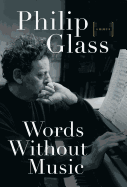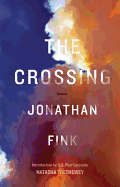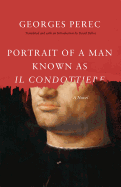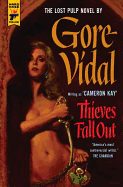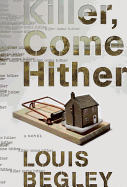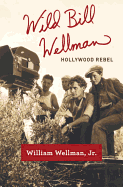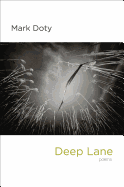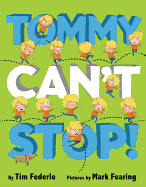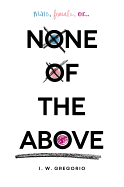Friday, April 17, 2015
This past Wednesday, two days after Nobel Prize winner Günter Grass, author of The Tin Drum and other modern classics, died, a book was published by an author unknown in the U.S. that deals with many of the same difficult, moral subjects that Grass addressed.
In 2008, at age 38, Jennifer Teege, the child of a German mother and Nigerian father, later adopted by a German family, discovered that her grandfather was Amon Goeth, the infamous Plaszow concentration camp commandant portrayed in Schindler's List--the man who liked to shoot prisoners from the balcony of his house overlooking the camp.
Teege remembered early visits with her biological mother and grandmother--Goeth's lover who lived with him at the camp--but she had had little contact with them after being adopted at age seven. Unaware of her biological family's past, she grew up, traveled, lived for a time in Israel, where she made close friends, married, had children--until at random she picked up a book in a library that was her biological mother's memoir of growing up the daughter of Amon Goeth. In My Grandfather Would Have Shot Me: A Black Woman Discovers Her Family's Nazi Past (The Experiment), Teege recounts her years-long struggle to come to terms with this awful personal legacy. She learned all she could about the period and her family. Full of shame and confused, for a time she was silent about it and suffered profound depression. She contacted her mother, who was still alive. She visited the Plaszow camp. She began to speak with her adopted family, with her friends in Germany, and eventually her Israeli friends. In occasional chapters, journalist Nikola Sellmair supplies historical and psychological perspective on Teege's difficult journey to know and understand her family story while creating her own identity.
In My Grandfather Would Have Shot Me: A Black Woman Discovers Her Family's Nazi Past (The Experiment), Teege recounts her years-long struggle to come to terms with this awful personal legacy. She learned all she could about the period and her family. Full of shame and confused, for a time she was silent about it and suffered profound depression. She contacted her mother, who was still alive. She visited the Plaszow camp. She began to speak with her adopted family, with her friends in Germany, and eventually her Israeli friends. In occasional chapters, journalist Nikola Sellmair supplies historical and psychological perspective on Teege's difficult journey to know and understand her family story while creating her own identity.
Teege started a tour for the book on Wednesday. Check her schedule here to see if you can hear in person her amazing story of horror and reconciliation and love. --John Mutter
The Royal We
by Heather Cocks and Jessica Morgan
Heather Cocks and Jessica Morgan dished out Hollywood secrets in their earlier novels, Spoiled and Messy. In The Royal We, they tackle royal relationships, with a story clearly inspired by Prince William and Kate Middleton's romance. At first glance this might sound trite, but The Royal We is surprisingly thought-provoking, invoking questions of love, privacy and sibling rivalry.
American Rebecca "Bex" Porter isn't fascinated by the royals, unlike her twin sister, Lacey. So when Bex arrives in Oxford for a year of study abroad, she doesn't realize at first that Nick, a guy down the hall, is Prince Nicholas, heir to the British throne.
Swept up into the dazzling world of the British upper class, Bex finds herself falling for Nick in a big way. But there is a dark side to the glamour: Bex and Nick's every public move is analyzed, the paparazzi are always on their tail, and becoming "the famous twin" is hurting Bex and Lacey's relationship. How much pressure can Bex take? Is the fairytale romance worth the sacrifice?
Told in a friendly, first-person style by Bex, The Royal We is both a compelling love story and an introspective look at how far people will go for fame. A delightful read, sure to please romance readers, royal watchers and Anglophiles alike, The Royal We is nearly impossible to put down. --Jessica Howard, blogger at Quirky Bookworm
Discover: We are amused by this modern day fairy-tale royal romance, complete with tabloids and paparazzi.
The Dig
by Cynan Jones
Cynan Jones (The Long Dry) is a Welsh writer who has published three novels, but The Dig, winner of the Jerwood Fiction Uncovered Prize, is his first to appear in the United States. It's not about an archeological dig, but it resembles one in the way Jones quietly scrutinizes his rural site's landscape and excavates his characters in an almost meditative way, using spare, simple, contemplative prose.
At The Dig's heart of darkness are two Welshmen. One, a "gruff and big man," forces badgers out of their setts for money or sport, to pit them against hounds. The practice was outlawed in 1835 but continues. He's a violent man, without compassion. He is also a man whose life is governed by fear. If caught, he'll be sent back to jail. Jones portrays him as someone who takes life rather than gives it, one who destroys, unlike his neighbor. Daniel is a livestock farmer whose beloved wife recently died after being kicked in the head by a friend's horse. It's lambing season and he's busy tending to the land, the sheep and the delivery of baby lambs. His wife's death rests heavily upon him.
Jones's narrative moves back and forth between the two men. When the badger baiter crosses onto the farmer's land in pursuit of his quarry, it's only a matter of time before they will clash: "The spade coming was like the wing of a bird." There's nothing bucolic about The Dig. It is a bitter pill made easy to swallow thanks to art and its paean to life. --Tom Lavoie, former publisher
Discover: Cynan Jones's spare, visceral story of isolation, sadness and love.
Portrait of a Man Known as Il Condottiere
by Georges Perec, transl. by David Bellos
French author Georges Perec is best known for his daring experimental novels, such as The Void, which doesn't contain a single word with the letter "e." A noted lover of puns and puzzles, he has written the vast majority of his work under self-prescribed restrictions, forcing him to think with strategies few authors ever consider. In light of this reputation, Portrait of a Man Known as Il Condottiere initially seems out of place, telling a rather straightforward story. But fans of Perec will see many of the author's tics in his first novel.
Discovered by translator David Bellos decades after Perec's death in 1982, Portrait of a Man follows art forger Gaspard Winckler as he escapes the house of his patron, whom he has murdered. Winckler is suffering an existential crisis about his career as a con man, forcing him to reckon with his life up to that point. While Perec creates suspense as to whether Winckler will escape, Portrait of a Man has more in common with Fyodor Dostoyevsky's Notes from Underground or Albert Camus's The Stranger than a thriller. Told in first, then second person, before switching to a dialogue midway through, Portrait of a Man is a continually unstable narrative, where the main character is not only unreliable to the reader, but to himself. Never sure of his own intentions, Winckler proves a fitting, if frustrating, character study on identity, both forged and otherwise. --Noah Cruickshank, marketing manager, Open Books, Chicago, Ill.
Discover: A long-lost work by one of France's most fascinating authors.
Mystery & Thriller
Thieves Fall Out
by Gore Vidal
In 1953, 27-year-old Gore Vidal published a pulp crime novel, Thieves Fall Out, using the pen name Cameron Kay. Vidal wrote it after publishing his controversial and "immoral" novel The City and the Pillar. It's now being republished with Vidal's name on the cover, and it's pulp through-and-through.
Peter Wells, from Salem, Ore., wakes up in a small, dingy room, a hot July sun beating through the window. He drank too much absinthe at a bar last night in Cairo, Egypt, and has been robbed. He came to post-World War II Egypt on a freighter hoping to find work in the burgeoning oil business, but was offered little help at the consulate. In a nearby hotel bar, he meets an Englishman, Mr. Hastings, who says he can offer him a job that pays well, which Wells accepts. It involves going to Luxor to help smuggle out of the country "a treasure! Perhaps the most valuable single piece ever found" in Egypt--the necklace of Queen Tiy.
From here, Vidal pushes all the classic pulp buttons. He introduces an array of sinister and exotic characters: the mysterious Comtesse de Rastignac; the piano-playing hunchback Le Mouche; the corrupt Inspector Mohammad Ali; and the love interest, the beautiful German singer Anna Mueller. There's espionage, murders, a classic bait-and-switch and even a possible plot to kill Egyptian King Farouk. The writing is workmanlike, the plot right out of Casablanca--but who cares! It's all great fun. --Tom Lavoie, former publisher
Discover: A small piece of atmospheric literary history in this lost pulp espionage novel by Gore Vidal.
Killer, Come Hither
by Louis Begley
Louis Begley (Memories of a Marriage) turns to crime fiction in this tale about the lengths to which a person will go to dispense vigilante justice.
Jack Dana is well on his way to an academic career when the attacks of September 11 force a reassessment. In the spirit of his late father, who served in Vietnam, Jack joins the Marines and goes to Afghanistan, where he is wounded. Back in the U.S., he writes a wildly successful novel based on his experiences and moves to New York City under the protective eye of his Uncle Harry, a lawyer at a white-shoe firm. When Jack returns from an extended stay in Brazil, where he'd been working on his next novel, he learns that Harry is dead--an apparent suicide, triggered, according to his former partners, by his increasing dementia and forced retirement. With the help of Harry's gifted young associate Kerry, who soon becomes his girlfriend, Jack pieces together the facts and soon concludes that Harry was murdered, implicating the law firm and its very well connected Texan client.
Harkening back to his wartime experience, Jack is driven by his need for personal justice, choosing to flush out the killer on his own despite the risks to himself and to Kerry. How he will snare his enemy, at what cost and whether he can satisfy his need for vengeance become the story's central questions. Killer, Come Hither combines unexpected plot twists and narrative tension with Begley's trademark elegant prose. It is a somewhat uneven but still pleasurable twist on a crime novel. --Jeanette Zwart, freelance writer and reviewer
Discover: A man's effort to avenge the death of his murdered uncle, a high-powered lawyer.
Biography & Memoir
Words Without Music: A Memoir
by Philip Glass
American composer Philip Glass is best known as one of the founders of minimalism in music, but his reach extends widely. He's scored countless films and operas, and provided a lexicon of sound for artists working at the forefront of electronic and ambient music. With such a litany of accomplishments, one might expect his memoir, Words Without Music, to come across as self-congratulatory. Glass does recount his achievements, but his frank, personable writing style makes the book a joy to read.
Words Without Music tracks Glass's musical training, beginning with his childhood in Baltimore, through his time working odd jobs to survive, finally arriving at his mid-life success. Glass's intellectual maturity came, he writes, in part from a range of interests he delved into, particularly while at the University of Chicago and among the New York avant-garde. He also provides explanations of his landmark compositions in a way that makes it clear to the layperson. Since Glass's output over his career has been remarkable, he unfortunately does not cover everything a die-hard fan might want to read about (most notably his symphonies and his 1982 album Glassworks). But, considering the insight he provides into the various works he does discuss (particularly the operas and early minimalist pieces), anyone with a passing interest in Glass will come away with a better understanding of this musical giant's creative process and influence. --Noah Cruickshank, marketing manager, Open Books, Chicago, Ill.
Discover: A fascinating memoir by one of America's most important minimalist composers.
Wild Bill Wellman: Hollywood Rebel
by William Wellman, Jr.
On his deathbed, prolific filmmaker William Wellman told his son (and now biographer), "Don't feel sorry for me. I've lived the life of a hundred men." A decorated World War I hero, Wellman married four times, had eight children and, despite prickly relationships with actors and studio heads, directed 76 motion pictures from 1923 to 1958.
Wellman (1896-1975) earned the nickname "Wild Bill" when he moved to Paris and joined the French Foreign Legion as a fighter pilot. After being shot down, he returned home--and immediately enlisted in the U.S. Army, training pilots. His friend Douglas Fairbanks, Jr., helped him segue from small roles in silent films to writing and directing.
Unwilling to be typecast in a specific genre, Wellman's oeuvre included war films (Wings, which won the first Best Picture Academy Award in 1927), screwball comedies (Nothing Sacred, with Carole Lombard, 1937), gangster dramas (Public Enemy, with Edward G. Robinson, 1931), westerns (The Ox-Bow Incident, with Henry Fonda, 1941), adventure (The High and the Mighty, with John Wayne, 1952) and melodramas (A Star Is Born, 1937--which earned Wellman his only Academy Award, for his screenplay).
William Wellman, Jr.'s Wild Bill Wellman: Hollywood Rebel is a film buff's delight: a gloriously detailed, no-holds-barred insider's look at his father's four-decade-long career working with a dazzling number of top stars. It's also filled with juicy on-set stories (including fistfights, decades apart, with Spencer Tracy and Anthony Quinn). Wellman previously wrote The Man and His Wings (about the making of his father's Wings) and the 1995 film documentary Wild Bill: Hollywood Maverick. --Kevin Howell, reviewer and marketing consultant
Discover: An affectionate, candid and extremely well-researched biography of film director William Wellman.
Political Science
After the Tall Timber: Collected Nonfiction
by Renata Adler
Journalist, critic and novelist Renata Adler (Canaries in the Mineshaft), now 76, was a literary star for decades, a staff writer for the New Yorker and the New York Times and the author of eight books. Eventually she offended so much of the literary world that she was effectively blackballed. But thanks to recent reprints of her novels and the high standards of her writing, Adler's work has been enjoying a healthy revival.
After the Tall Timber provides an overview of her nonfiction from 1963 to 2001 in 20 essays, including some previously uncollected pieces. For two of the most contentious, Adler has written commentaries to answer her attackers.
Controversies aside, there are few writers with this depth of political, legal and cultural knowledge, prose of this quality and such a sharp, sometimes self-deprecating, sense of humor. Adler investigates stories with an open and intensely critical mind. She has her own angles on the Selma march, Watergate, Biafra, The Starr Report, film reviewing and the Supreme Court. Her criticisms of journalistic practices remain unfortunately relevant. From 2001: "Once television reporters became celebrities, it was perhaps inevitable that print reporters would want at least their names known; and there were, especially at first, stories one did well to read on the basis of a trusted byline. There still existed what Mary McCarthy, in another context, called 'the last of the tall timber.' But the tall timber in journalism is largely gone--replaced, as in many fields, by the phenomenon of celebrity." --Sara Catterall
Discover: A selection of nonfiction by a fine and intensely independent American journalist and critic.
Poetry
The Crossing
by Jonathan Fink
In the titular poem of his debut collection, The Crossing, Jonathan Fink writes of wandering souls, "To enter back into their forms, they wade/ into the body's sleep, descending thigh/ to chest: the match of throat, then mouth, then breath." Briefly, mind and body unify; the dream-state meets the sleeping form, and there's an awakening. Such are these poems, which capture moments personal and historical in the amber of Fink's economical lines.
Few collections invite a reader to luxuriate like The Crossing. Perception and reality underpin many of Fink's poems, which include an account of high school bullying and an 18-part poem about the 1911 Triangle Shirtwaist fire. In such competent hands, the book's varied topics--a meditation on Leonardo da Vinci's Vitruvian Man, a restaurant peopled by oil-field roughnecks--feel not only cohesive but visionary. The threads Fink weaves between worlds past and present, real and fantasized, are as palpable as they are prescient. All of the poems share, as Natasha Trethewey writes in her introduction, "precision of language, clarity, and the quest for beauty."
The best poetry is often signified by what's absent--misplaced words, jarring shifts, inconsistencies. The Crossing is a collection into which one submerges, rapt, as in a dream. --Linnie Greene, freelance writer
Discover: An immersive and artful debut that depicts moments both historical and contemporary in a set of striking, compulsively readable poems.
Deep Lane: Poems
by Mark Doty
Mark Doty (Fire to Fire) has been delighting readers for many years with his poetry and memoirs. Deep Lane's 35 poems continue to explore subjects Doty cares a great deal about: the natural world, animals, his personal relationships and the divine.
Nine poems scattered throughout the book are called "Deep Lane," the road Doty lives near in Amagansett, N.Y. They carefully and lovingly dive into this place. His home and the world he lives in--"Eden" with its "shingled cottage"--provide the inspiration for the poems. Here are ticks ("heat-seeking, tiny, multitudinous"), a pond with its white fish soon to be swallowed by a bird ("bill raised to the air, the throat unrelenting"), his dog Ned ("You run, darling, you tear up that hill"), maples and walnuts, radishes, the wind ("you can't stay anywhere to love"). The last poem in the sequence, set in November, is about his partner coming home late at night: "with a generous,/ unflinching scrutiny, undeceived, loving, as clear a gaze/ as anyone had ever brought to you."
One of the longer poems is the impressive "The King of Fire Island," about a buck that lives there, the "very model of his kind." The deer is missing one hoof and would accept carrots from Doty and his friends, safe, "no cars, no hunting." In late winter, Doty hears a rumor about a deer's head floating in the bay: "I saw my own severed head/ slip to the floor, a glazed, paltry thing."
These are gentle, reflective, affecting and observant poems about Doty's past and about the present world around him. --Tom Lavoie, former publisher
Discover: Dazzling, elegant poems, ferocious in their love for life, from one of the country's most admired and respected poets.
Children's & Young Adult
Lost in NYC: A Subway Adventure
by Nadja Spiegelman, illus. by García Sánchez and Lola Moral, coloring
Eisner Award–nominated author Nadja Spiegelman (Zig and Wikki in Something Ate My Homework) and European cartoonist Sergio García Sánchez, making his U.S. debut, deftly combine history, geography and a touch of engineering in a graphic novel centered on a budding friendship between two classmates on a field trip in New York City.
Mr. Bartle introduces new student Pablo to the class, and Alicia volunteers to be his field trip partner. The teacher asks which subway line comes closest to the Empire State Building, the destination for their field trip, and the kids tick off N, R, Q, 1, 2, 3 and 6. Mr. Bartle agrees, "All these will work." A subway map with a superimposed Empire State Building validates their answers. Even native New Yorkers will likely learn something from Mr. Bartle's history of both the tallest building in the world (when it opened in 1931) and the construction of the subway system (a chronology unfolds in black-and-white photographs with interconnected dialogue balloons). At 96th Street, Alicia and Pablo get separated from the group, hopping on the express while their class takes the local train. They blame each other, and at 42nd Street, Pablo angrily dashes to the 7 train, losing Alicia.
In a clever wordless spread, Sánchez charts all three routes (taken by Alicia, Pablo and their class) with a close-up grid of the subway. A happy reunion in the lobby of the Empire State Building seals the friendship between Alicia and Pablo. New Yorkers and newcomers alike will savor the bounty of interesting facts.
[Also available in a Spanish-language edition: Perdidos en NYC (9781935179856), translated by Lola Moral.] --Jennifer M. Brown, children's editor, Shelf Awareness
Discover: A graphic novel tale of friendship combines fascinating facts about the New York subway system, the Empire State Building, history and geography.
Tommy Can't Stop!
by Tim Federle, illus. by Mark Fearing
This picture book could serve as the early childhood chronicle of Tim Federle's unforgettable Nate (Better Nate than Ever; Five, Six, Seven, Nate!), if Nate had had parents who encouraged his talents from the get-go.
"Tommy's gotta bop. (He can't keep still.)," writes Federle of his constantly moving hero. He bounces like a pogo stick throughout the house, ricochets a soccer ball in the kitchen ("I'm a bulldozer!" says he), and hurdles like an antelope in the living room (knocking over a lamp). When his parents and sister try to tire out Tommy, it backfires. At least his dog appreciates him. Mark Fearing (Earthling!) conveys the hero's kinetic energy in images of a boy who rarely touches down, casting shadows on the floor beneath him. One morning Mom takes Tommy to dance class ("I'm not touching a tutu!" he cries). But his pogo stick hops, bulldozer moves and antelope leaps work well with his teacher's choreography. Finally Tommy has found just the right outlet for his indefatigable personality: "Tommy's got talent!" Fearing portrays Tommy center stage in a spotlight, with delighted faces on his parents, and his sister videotaping his big moment from the audience.
Federle suggests that all children have a calling, it just may take a little time to figure out what that is. Fearling depicts a loving family that, while slightly inconvenienced by Tommy's antics, is thrilled that he is able to harness his energy for something he loves. --Jennifer M. Brown, children's editor, Shelf Awareness
Discover: A charming unstoppable hero who finds a calling that makes use of his kinetic energy.
None of the Above
by I.W. Gregorio
Eighteen-year-old narrator Kristin Lattimer has it all: Sam, a boyfriend who loves her; two BFFs, Vee and Faith; and a kind, supportive widower father. But after she and Sam have painful intercourse, and Krissy goes to aa gynecologist for the first time, she discovers that she has AIS (androgen insensitivity syndrome).
I.W. Gregorio, a practicing surgeon making her debut as a novelist, clearly describes what Krissy goes through, both physically and emotionally, as a result of AIS. The heroine looks like a female but has some of the internal characteristics of a male. "[L]ife was a multiple-choice test with two answers; Male or Female. And I was None of the Above," Krissy thinks. She confides her secret only to her most trusted friends, yet somehow her diagnosis becomes known all over the school. Gregorio credibly describes Krissy's feelings of isolation and betrayal, and shows how a true friend or two and a sense of purpose help Krissy through this traumatic time of questioning her identity, her decision about whether to have surgery to remove the internal male characteristics, and how to face her classmates after the vicious comments they've made.
Gregorio never falters in her authentic portrayal of Krissy's journey to self-acceptance, and her characterizations of supporting characters as they are affected by Krissy's situation is spot-on. Pair this with Beyond Magenta for teens who may be exploring gender identity for themselves, and the people who care about them. --Jennifer M. Brown, children's editor, Shelf Awareness
Discover: The eye-opening journey of Kristin Lattimer, who discovers on a doctor's visit that she is intersex.


